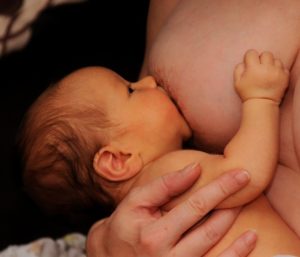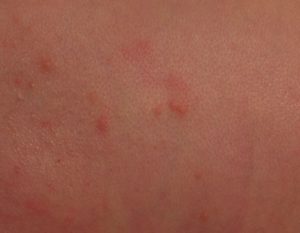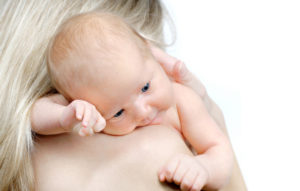There are quite a few common concerns when it comes to new infants. Sometimes as a new parent it’s hard to know what is or isn’t normal. This section takes a look at the most common concerns that arise.
Jaundice
Jaundice is a common condition that affects 50% of newborns in the first week of life. Parents often notice the baby’s skin developing a yellow tone. Jaundice develops because after birth, babies have extra red blood cells they do not need. As these break down, they turn into a substance called bilirubin which the baby’s body gets rid of in the first few days in black and green stools (meconium). Too much bilirubin makes the baby’s skin, and sometimes the whites of the baby’s eyes look yellow (jaundiced). You can help prevent or reduce jaundice by feeding your baby often, for as long as they want. The frequent feedings help the baby pass the bilirubin in their stools.

Some jaundiced babies are sleepy and may not feed well. If you are concerned about your baby:
- wake and feed your baby at least every 3 hours or more (for a total of 8 to 12 times in 24 hours)
- sunlight is not an effective treatment and can pose a risk of sunburn for your baby
- contact your healthcare provider
Healthcare providers will assess your baby to see how much bilirubin is circulating in your baby’s body. A jaundice meter may be used to tell how much bilirubin is in their body. It is placed on their forehead and uses a flash of light. Testing with the meter only takes a couple of seconds and does not hurt the baby. Some may need a blood test for further assessment.
While this type of jaundice is very common, and resolves with frequent feeds, some baby’s will need additional treatment. If your baby needs treatment, they may need to be in the hospital for a few days under special lights (phototherapy).
Sometimes a baby will become jaundiced in the first 24 hours of life. This type of jaundice is usually because of a difference between the parent and baby’s blood type. If your baby is jaundiced this early, contact your healthcare provider right away as phototherapy is often needed.
A less common cause of jaundice is liver disease. If at 14 days of age, your baby is jaundiced (skin and whites of eyes are yellow) and your baby’s stool is pale (grey) or the urine is dark (brown) they will need testing and treatment.
Diarrhea or Constipation
Diarrhea stools are:
- a definite change from your baby’s usual stool pattern
- a different colour, increased frequency and/or watery consistency (the stools may contain mucus and/or blood)
- sometimes foul-smelling
- sometimes expelled with considerable force
Babies, especially younger than 6 months, need special attention when they have diarrhea because they can easily become dehydrated. Call your healthcare provider or the Health Link at 811 if your baby has diarrhea and is showing any of the following signs of dehydration:
- dry skin, mouth or tongue
- no spit or tears
- sunken-looking eyes
- urinating less often
- dark coloured urine
- weak or sleepy
- sunken fontanelle (soft spot) in a young baby
Constipation
Constipated stools are:
- a definite change from your baby’s usual stool pattern
- dry, hard and difficult to push out
- sometimes have streaks of blood
Do not give your baby laxatives, suppositories, enemas, medicine or home remedies. If you think your baby is constipated, call your healthcare provider. A breast/chestfed baby is rarely constipated. Between 6-8 weeks of age some exclusively breast/chestfed babies may have very infrequent bowel movements (every 7 -10 days) , this is normal and is not constipation.
Diaper Rash
Diaper rash is a red area or rash on your baby’s diaper area.
If your baby develops a diaper rash:
- change diapers often
- wash your hands before and after each diaper change
- avoid using perfumed baby wipes, soaps, detergents and fabric softeners
- expose the diaper area to air for 10 to 15 minutes at least 3 to 4 times a day
- apply a thick layer of a zinc-based cream to the area with each diaper change (use a disposable liner in cloth diapers to avoid the cream coming into direct contact with the diaper as it won’t wash out)
- try a different brand if you are using disposable diapers
- check that the water resistant covers are made from a breathable material if you are using cloth diapers
Call your healthcare provider if the diaper rash:
- lasts longer than 48 hours
- looks like blisters
- is bleeding
- has signs of a yeast infection (raised bright red larger bumps that seem to spread)
Body rashes
The most common rash is newborn rash. It is a blotchy, red, pinpoint rash found anywhere on the body. It is common in the first months of a baby’s life. The cause is unknown. Although the rash may look unattractive, it is normal, needs no treatment and will pass with time.
Other causes of rashes may be:
- overheating
- plastic mattress covers (can cause overheating and sweating , which can cause a rash)
- perfumed laundry detergents or fabric softener on their clothing
- perfumed baby oils, lotions or wipes
- perfumed products that are being used by the baby’s care-giver (body spray, lotions etc.)
- spit up residue around the mouth and neck
- allergy
- illness
- insect bites (use clothing and netting to protect your baby as it is not recommended to use repellent until 2 years of age)

Cradle Cap
Cradle cap is thick, greasy or flaky scales on your baby’s scalp. It is caused by normal changes in your baby’s skin. Although cradle cap won’t harm your baby, you may want to treat it.
- gently massage a small amount of oil (for example canola oil) onto your baby’s scalp.
- allow the oil to soak in for several hours or overnight.
- rub gently with a towel or soft brush to loosen the scales.
- wash the scalp with a mild shampoo and rinse well.
- repeat if necessary, at the next bath.
Call your healthcare provider if you’re concerned about your baby’s cradle cap.
Sneezing
Babies may sneeze often to help clear their nostrils. This is common in the first few months. It doesn’t mean your baby has a cold. If you find your baby’s nose becomes so plugged it is interfering with feeding :
- add extra humidity in your home (if you use a portable humidifier, it will need regular cleaning and disinfecting as using an unclean humidifier can lead to breathing problems or allergies)
- do not use a nasal aspirator, it can create swelling inside the nose, making the condition worse.
- use saline nose drops (sold at a pharmacy or make your own)
recipe for nose drops:
- mix 2.5 mL (1/2 teaspoon) of salt to 250 mL (1 cup) of boiled, cooled water.
- place 1 or 2 drops into each nostril with an eye dropper before feeding.
Gas
Your baby may get gas or air bubbles during or after feeding. Some babies will burp on their own and others may need help.
Your baby may need to burp:
- after feeding on the first breast
- after drinking about half of the formula
- if she or he becomes restless, cries or pulls away during a feeding
- at the end of a feeding
To burp your baby:
- support your baby’s chest and chin
- gently rub or pat your baby’s back
- use different positions (for example, holding your baby upright or across your lap)

Hiccups
Hiccups are very common and often bother the parents more than the baby. Sometimes changing your baby’s position or getting your baby to suck (for example on your finger) will help stop the hiccups. Hiccups will not harm your baby.